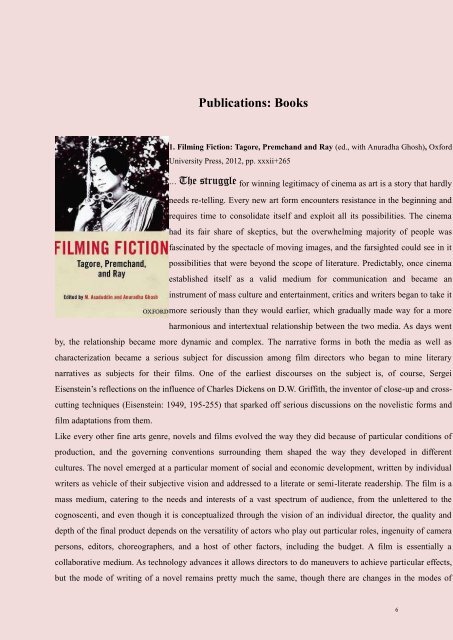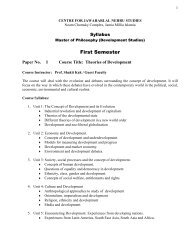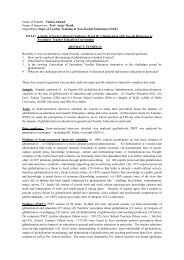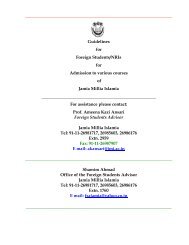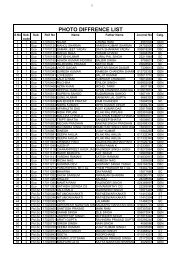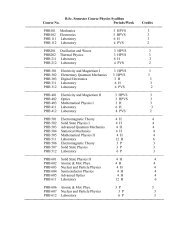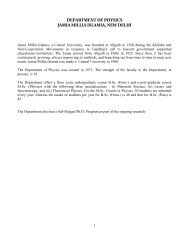View full profile - Jamia Millia Islamia
View full profile - Jamia Millia Islamia
View full profile - Jamia Millia Islamia
You also want an ePaper? Increase the reach of your titles
YUMPU automatically turns print PDFs into web optimized ePapers that Google loves.
Publications: Books1. Filming Fiction: Tagore, Premchand and Ray (ed., with Anuradha Ghosh), OxfordUniversity Press, 2012, pp. xxxii+265… The struggle for winning legitimacy of cinema as art is a story that hardlyneeds re-telling. Every new art form encounters resistance in the beginning andrequires time to consolidate itself and exploit all its possibilities. The cinemahad its fair share of skeptics, but the overwhelming majority of people wasfascinated by the spectacle of moving images, and the farsighted could see in itpossibilities that were beyond the scope of literature. Predictably, once cinemaestablished itself as a valid medium for communication and became aninstrument of mass culture and entertainment, critics and writers began to take itmore seriously than they would earlier, which gradually made way for a moreharmonious and intertextual relationship between the two media. As days wentby, the relationship became more dynamic and complex. The narrative forms in both the media as well ascharacterization became a serious subject for discussion among film directors who began to mine literarynarratives as subjects for their films. One of the earliest discourses on the subject is, of course, SergeiEisenstein’s reflections on the influence of Charles Dickens on D.W. Griffith, the inventor of close-up and crosscuttingtechniques (Eisenstein: 1949, 195-255) that sparked off serious discussions on the novelistic forms andfilm adaptations from them.Like every other fine arts genre, novels and films evolved the way they did because of particular conditions ofproduction, and the governing conventions surrounding them shaped the way they developed in differentcultures. The novel emerged at a particular moment of social and economic development, written by individualwriters as vehicle of their subjective vision and addressed to a literate or semi-literate readership. The film is amass medium, catering to the needs and interests of a vast spectrum of audience, from the unlettered to thecognoscenti, and even though it is conceptualized through the vision of an individual director, the quality anddepth of the final product depends on the versatility of actors who play out particular roles, ingenuity of camerapersons, editors, choreographers, and a host of other factors, including the budget. A film is essentially acollaborative medium. As technology advances it allows directors to do maneuvers to achieve particular effects,but the mode of writing of a novel remains pretty much the same, though there are changes in the modes of6


